engineersheaven's Idea / Prospect
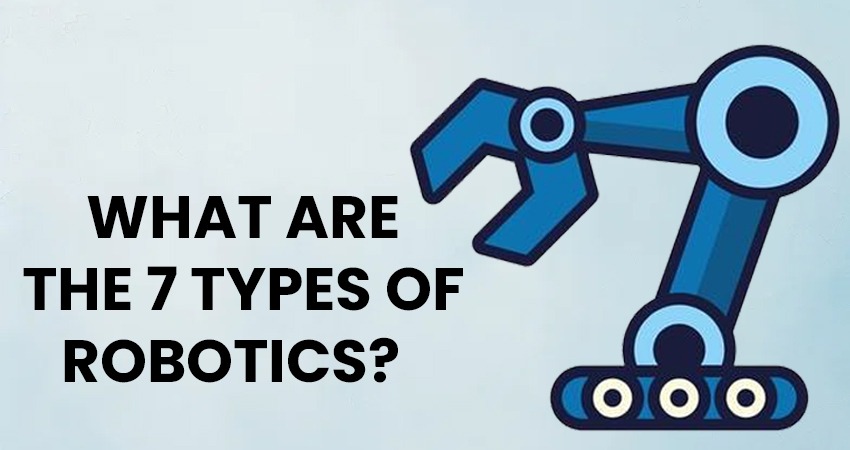
Robotics is shaping the world like never before. Robots have made a decisive entry into modern life, from industries to homes. But did you know different types of robotics have been designed to complete various jobs? Identifying these categories helps us understand how quickly technology is progressing.
Regarding Engineers Heaven, our mission is to educate and inspire by sharing knowledge about robotics, automation, etc. To understand this, we must dive into the seven types of Robotsand what they do.
Autonomous Mobile Robot (ARMs)
Mobile Robots (AMRs) can navigate the environment without human intervention. They are equipped with sensors, artificial intelligence, and machine-learning systems that enable them to navigate independently of direct human control.
These robots are commonly deployed in warehouses, hospitals, and even residences. They assist with logistics, surveillance, and delivery services. AMRs are used in warehouse automation, and companies like Amazon have leveraged their power to make their operations faster and smoother.
AGVs (Automated Guided Vehicles)
AGVs, on the other hand, follow a predefined path, unlike AMRs. They use tracks, magnetic strips, or predefined routes to transport goods.
AGVs are seen everywhere in factories and large warehouses. They expedite production by transferring materials without human involvement. Industries deploy them and use themto cut down on labor expenses and increase workplace safety.
Articulated Robots
Robots that have multiple joints make it possible to move precisely. That looks like a human arm , also called a robotic arm.
Articulated Robots Industrial robots are frequently seen in factories, welding job sites, painting job sites, and assembly lines. So, how does this make them suitable for repetitive action with extreme accuracy? They are critical in the automobile and electronics sectors.
Humanoid Robots
Humanoid robots have human appearance and human capabilities. They have arms, legs, and even facial expressions. They exist to converse with humans in the way we do.
These robots are employed in customer service, education, and even healthcare. This one is Sophia, a famous humanoid robot known for being an example of bringing AI into social situations. Humanoid robots help older adults; They accompany older people and support them.
Cobots (Collaborative Robots)
Cobots are not intended to substitute for human workers; rather, they are intended to work side by side with them. They help workers by doing dangerous or repetitive jobs.
Those robots are used every day in industries where safety and efficiency are concerned. They assist on assembly lines, in medical settings, and in research. Unlike traditional robots, cobots don't require protective enclosures. They detect the presence of humans and adjust to collaborate safely with them.
Industrial Robots
Industrial robots are designed for challenging work. They are robust, accurate, and don't tire after working hours.
Industrial robots are commonly used in the automotive, electronics, and metal industries. They do the lifting, cutting, welding, and packaging. Due to their standardization, industrial robots are an efficient way to ensure quality production while lowering costs. They form the backbone of contemporary manufacturing.
Swarm Robots
Swarm robotics is closer to nature, particularly of the social variety found in creatures such as bees or ants. Particular robots operate in groups, using basic rules to accomplish complex actions.
Nevertheless, swarm robots are employed in search and rescue, medical applications, environmental monitoring, etc. They can operate in hazardous environments where humans cannot even proceed. Cooperation makes them well-suited for significant accomplishments.
The Future of Robotics
The field of robotics is changing at a remarkable pace. Animal obesity is a big problem, but as AI and machines lessen, they'll become more intelligent and autonomous. The range of possibilities is vast, from self-driving cars to robotic surgeons.
In Engineer’s Heaven , We believe in being ahead of the curve. So, in case it helps, get lost in our deep ocean of information about the latest advancements in robotics and engineering. Engineers Heaven – Your Gateway to the Future of Technology for Students, Professionals, and Enthusiasts Join Engineers Heaven for more info on robotics and engineering and keep up with the automation revolution!
(Disclaimer: This statistics could be different in different part of World and Different timeline. this statistics has been generated based on data available till 2025 or relavant time span.)

Artificial intelligence is developing rapidly. New models challenge the old ones every few months. Some thoughts: A new competitor in AI is DeepSeek AI, which claims to compete with, if not beat, GPT models. But is it better? Let's break it down.
Technologies evolve daily, and we at Engineers Heaven strive to keep you updated with the latest tech trends. This guide will help you see how DeepSeek stacks up to GPT and which could be correct.
What is DeepSeek?
To address the urgent need for a versatile AI language, DeepSeek has been developed as a new AI model. It claims to be better, more efficient, and more accurate in reasoning than previous models. They say it processes information more swiftly and generates more precise responses.
Thisis increasingly built and trained in a way that suggests not purely predicting the next word but instead a deep connection with those words themselves. This lets it deal with complex ideas more effectively and produce responses that feel more human.
But is it better than GPT?
How Does GPT Work?
GPT (Generative Pre-trained Transformer) is the AI model of the hour and has been for the past few years. The most recent versions, including GPT-4, rely on considerable datasets to produce human-like answers. ChatGPT and similar LLMs are widely used in chatbots, content generation, coding, and customer support.
GPT's greatest strength is its adaptability. It does well with casual conversations, technical questions, storytelling, and more. However, it has occasional hiccups with factual accuracy and long-term memory.
DeepSeek vs. GPT: What Sets Them Apart
- Accuracy and Reliability
DeepSeek says its generative search provides more precise answers than GPT. It employs a different method of training to mitigate errors in accurate information. However, GPT is better tested and trusted by users.
- Reasoning Ability
DeepSeek's enhanced logical reasoning is one of its additional strengths. In some instances, it can also handle intricate instructions better than GPT. On the other hand, GPT is more informed as it trains on a lot of data.
- Creativity and Writing Style
GPT still retains an edge in creativity. Its reconciliation of more engaging and natural text makes it the best fit for content generation, storytelling, and marketing. While DeepSeek works wonderfully at technical, high-precision tasks, informal writing does not feel natural.
- Speed and Efficiency
DeepSeek aims to improve the speed and performance significantly. It can handle high volume and high velocity to use in real-time applications. GPT is also fast and leaves lags sometimes while handling complex queries.
- Availability & Accessibility
GPT is available on many platforms; DeepSeek has yet to take the world by storm. Many users and businesses are already using GPT-based tools, so it will be harder for DeepSeek to replace them.
Which One Should You Choose?
Whether you need DeepSeek or GPT is a matter of choice.
- Highly Technical Task: If you need high accuracy, you may prefer to go with DeepSeek.
- GPT is still the best option for creativity, natural conversations, and versatility.
Although DeepSeek might look attractive, GPT has succeeded well in different industries.
Final Verdict
DeepSeek may be a new, powerful AI model as it runs on a plethora of advanced search engine-level documentation. However, GPT is still the champion regarding versatility and user assimilation. DeepSeek has been shown to perform better in some use cases, but it still has a long way to go before it can completely replace GPT.
You should test both to find which works better for you and consider the cost of Deepseek vs Chatgpt.AI is advancing quickly, and subsequent versions may change the balance. Until then, keep reading about AI and tech!
For AI, programming, and tech innovations discussions from the experts, explore Engineer’s Heaven.
(Disclaimer: This statistics could be different in different part of World and Different timeline. this statistics has been generated based on data available till 2025 or relavant time span.)
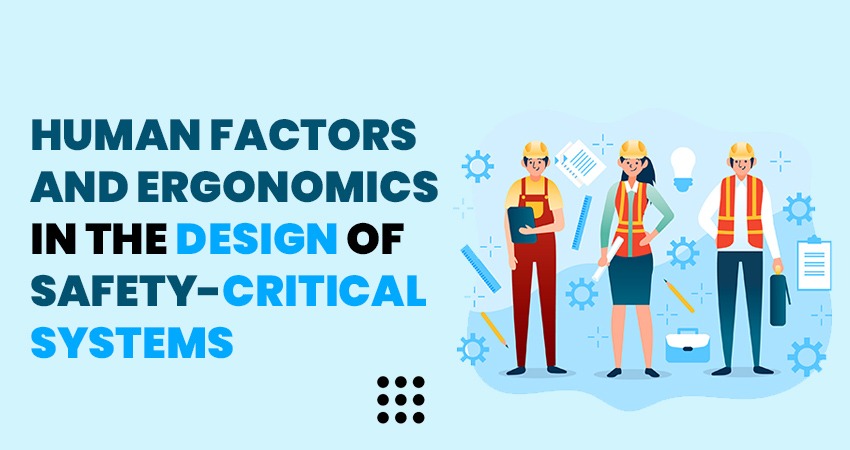
Safety-critical systems are crucial in
industries such as healthcare, transportation, and energy. These are processes,
tools, and equipment where errors can mean a difference between life and death.
It follows that designing these systems requires careful planning, with human
factors and ergonomics, of course.
What Are Human
Factors and Ergonomics?
Human factors refer to how people
interact with systems, tools, and environments. It considers physical,
cognitive, and emotional capabilities. A branch of human factors is ergonomics.
Ergonomics focuses on designing tools, equipment, and processes to fit human
needs.
When applied to safety-critical systems,
these fields optimize design to reduce risks, prevent errors, and enhance
performance.
Why Are Human
Factors Important?
Humans are the central element in
safety-critical systems. Mistakes typically arise from inadequate system
design, not individual failure. Lack of communication, sleep deprivation, or
confusing interfaces cause accidents.
Think about aviation. Pilots make
decisions in an instant based on cockpit controls. A bad interface might delay
action or result in an inappropriate action. If designers pay attention to
ergonomics, they ensure controls are intuitive and simple to use, even when
there is stress involved.
Applications in
Safety-Critical Systems
Human factors and ergonomics are applied
across industries. Let's look at a few examples:
1. Healthcare
In hospitals, patient safety is
paramount. Medical devices such as ventilators or infusion pumps must have
clear instructions and error-proof designs. Complex interfaces can confuse even
trained professionals.
By applying ergonomic principles, devices
are designed with user-friendly controls. This reduces the risk of dosage
errors or device misuse.
2. Transportation
In transportation, whether on road, sea,
or air, safety is paramount. For instance, the train operators and pilots use
control panels to manage operations. Accidents may result from poorly labeled
buttons or unclear alerts.
Human factors ensure that control systems
are designed to fit how operators think and act. This reduces the chances of
errors and improves response times.
3. Energy Sector
Nuclear plants and oil rigs are high-risk
environments. Workers in these sectors rely on detailed procedures and control
systems. Misunderstanding or skipping steps can lead to catastrophic events.
Ergonomic designs in these industries
focus on creating systems that are easy to follow. Clear displays, logical
workflows, and error-checking features reduce risks significantly.
How to Implement
Ergonomics in Design
The incorporation of human factors into
the design process has to be systematic. Here’s how it works:
1. User-Centered
Design
It is necessary to engage the end-users
right from the design inception stage. Get to know their requirements and
constraints as well as issues. Hence there arises working systems which operate
quite effectively within the real world.
2. Task Analysis
Subdivision of activities or tasks.
Determine where the process is vulnerable to a slow down. Redesign to reduce
the complexity coupled with confusion.
3. Prototyping
and Testing
Make models of the designs and use them
in a real setting. Get responses and improvements on the design. Make it user
friendly and at the same time as safe as possible.
4. Continuous
Improvement
Design is not a one-off process. Closely
continue to supervise how the system operates and continue to ask users about
how it is doing. The insights must be used to make ongoing enhancements.
Advantages of
ergonomics in safety critical systems
1. Error
Minimization
Effective systems reduce the chances of
making an error. This eliminates risks thus enhancing safety.
2. Improved
Efficiency
If the tools and processes applied are
simple, the time required to complete a task is significantly reduced. It
allows the workers to concentrate on the important decisions hence enhancing
efficiency.
3. Improved User
Satisfaction
Good designs decrease frustration. People
have trust and satisfaction in systems. This results into increased
satisfaction and improved performance.
4. Cost Savings
This paper will highlight how avoiding
accidents and errors will result in saving of cash. He stated that it minimizes
failure time, legal risks, and expenses concerning the systems.
The Role of
Engineers in Safety-Critical Systems
Engineers play a crucial role in the
design of safe systems, combining technical knowledge with a strong
understanding of human factors to design systems that are robust, reliable, and
user-friendly.
As an engineer or future professional,
knowledge in the field of human factors and ergonomics is vital, thus making
safer, more effective systems.
For the expansion of knowledge of
engineers, sites like Engineer’s Heaven can be helpful. The site provides
tutorials, articles, and courses to help enhance your skills in any of these
areas.
Conclusion
Designing safety-critical systems
requires thought. We can create an environment where people work safely and
effectively by including human factors and ergonomics. These principles benefit
all industries, from healthcare to energy.
If you want to deepen your understanding
or explore related topics, visit Engineers Heaven. It’s your gateway to
professional growth and practical insights.
Take the step toward designing systems
that make a real difference. Safety begins with smart design.
(Disclaimer: This statistics could be different in different part of World and Different timeline. this statistics has been generated based on data available till 2025 or relavant time span.)

The global supply chain is the backbone
of the world's economy. It connects manufacturers, suppliers, and consumers
across continents. However, traditional supply chain systems are often plagued
by inefficiencies, delays, and high costs. These challenges have long demanded
innovative solutions, and Industry 4.0 technologies have risen to the occasion.
Industry 4.0, also known as the fourth
industrial revolution, is changing supply chain management and logistics in
extraordinary ways. It includes advanced technologies like artificial
intelligence, the Internet of Things, big data, blockchain, and robotics. These
all together enable business to optimize its operations, cut costs, and provide
seamless service to customers.
Industry 4.0
Changing Supply Chains from Reactive to Predictive
1. One of the most important changes brought about
by Industry 4.0 is from reactive to predictive supply chain management.
Traditionally, companies reacted to problems as they arose—whether it was a
delayed shipment, a stockout, or mismanaged inventory. Now, with Industry 4.0,
organizations can anticipate and address potential issues before they escalate.
2. IoT plays a central role in this predictive
approach. Smart sensors are embedded in devices and shipments to collect
real-time data that can provide actionable insights into every stage of the
supply chain. For instance, such sensors can track the location and condition
of goods in transit, monitoring factors like temperature, humidity, or
potential delays. If a problem arises, such as a temperature spike during the
transport of perishable items, the system automatically sends an alert. This
level of visibility ensures the quality is achieved and losses at minimum.
3. Logistics and supply chain management rely on
artificial intelligence to drive the efficiency and accuracy of operations. Big
data analysis lets AI identify complex patterns, predict requirements, and
decide on the better course of actions.
4. For instance, AI-powered tools can forecast
market trends, enabling businesses to anticipate high-demand periods and adjust
inventory levels accordingly. This minimizes the risk of stockouts during busy
seasons and prevents overstocking during slower months.
5. AI is also being used in logistics to optimize
delivery routes. Delivery trucks, equipped with AI-powered navigation systems,
take the most efficient routes, saving time, reducing fuel consumption, and
improving on-time delivery rates. This level of optimization not only reduces
operational costs but also enhances customer satisfaction.
Big Data for
Informed Decisions
Industry 4.0 is based on big data, which
enables companies to make decisions based on data. The data generated by IoT
devices, AI systems, and digital tools can be too voluminous to be analyzed.
However, advanced analytics tools can process such data and bring out
meaningful insights.
For instance, through big data, companies
can look at seasonal trends in demand. Retailers will be able to predict peak
periods of shopping to ensure they stock the right items. In addition, big data
gives businesses the chance to spot bottlenecks and underperforming suppliers
in the supply chain and then take corrective actions.
Increasing Transparency with Blockchain
Blockchain technology has revolutionized
the matter of transparency and trust in supply chain management. This
decentralized digital ledger records every step in the supply chain, producing
a secure and tamper-proof record.
Sensitive or high-value product
industries such as food, pharmaceuticals, and luxury goods find blockchain
quite helpful. A customer can track back a product to its source to ascertain
authenticity and ensure proper sourcing. In the food industry, for instance,
blockchain would be able to track the history of produce from farm to table so
that customers could have confidence in the safety and quality of foodstuffs.
The Automation
and Robotics transforming the operations
Automation and robotics take over the
management of warehouses and factories. The traditional functions like sorting,
packing, and handling stocks are carried out by automated systems. Robots are
always at work, faster than humans and do not make human mistakes hence
improving productivity.
This, using such technologies as robotic
arms and automated vehicles allows organizing the work process efficiently and
minimizing the number of employees. This assists the business to manage large
amounts of goods and at the same time satisfy the needs of the modern market.
Visit Engineer’s Heaven to know more about, and learn from the expert community
(Disclaimer: This statistics could be different in different part of World and Different timeline. this statistics has been generated based on data available till 2025 or relavant time span.)

Computational Fluid Dynamics (CFD) has really changed the analysis and
design fluid systems by the engineers. The fluid flow aspect is one of the
critical areas in the designing of mechanical equipment to be effective and
reliable. CFD solves complex fluid-related challenges that become an
indispensable tool for engineers; it enables engineers to simulate and
visualize fluid systems before making prototypes.
At Engineers Heaven, we always put emphasis on CFD in Mechanical Engineering. Be it designing industrial pumps, turbines, or HVAC systems, CFD
can help you enhance your design process. In this blog, we shall explore how
CFD is applied in fluid systems and equipment design.
What Is
Computational Fluid Dynamics?
CFD is a branch of fluid mechanics. It uses numerical analysis and
algorithms to simulate fluid flow. With CFD, engineers solve problems related
to fluid motion, heat transfer, and interactions with solid surfaces. It
combines physics, mathematics, and computer science to provide accurate
results.
CFD software subdivides the fluid space into tiny elements. With the
help of those elements, pressure, velocity, and temperature can be computed in
the system. It will provide an insight into flow patterns, thereby indicating
any issues in the design.
Why to Apply CFD
in Design?
Traditional analysis methods for fluids take much time. Prototypes for
testing take time and money to prepare. The application of CFD provides an
inexpensive approach. Detailed insight without actual physical testing at early
stages can be derived.
CFD saves time, cuts costs, and is more accurate. Engineers can test
different designs under different conditions. They can also optimize
performance to meet specific requirements.
Applications in
Fluid Systems
Fluid systems design involves the use of CFD widely. Below are some
key applications:
Pumps and
Turbines
CFD enables engineers to design energy-efficient pumps and turbines.
It analyzes flow patterns, pressure losses, as well as the risk of cavitation.
Engineers can modify designs for better efficiency and lower wear.
HVAC Systems
CFD optimizes airflow in heating, ventilation, and air conditioning
(HVAC) systems. It ensures uniform temperature distribution and improves energy
efficiency.
Piping Networks
Fluid flow in piping networks is complex. CFD identifies bottlenecks
and pressure drops. It helps optimize the layout and size of pipes for smoother
flow.
Aerospace
Applications
In aerospace engineering, CFD improves aerodynamics and fuel
efficiency. Engineers use it to design jet engines, nozzles, and airfoils.
Automotive
Industry
CFD enhances vehicle performance. It optimizes cooling systems,
exhaust flow, and fuel injection. It also improves aerodynamics for better
speed and fuel efficiency.
Applications in
Equipment Design
CFD is equally valuable in equipment design. The engineers use it to
analyze and improve the performance of equipment. Here are some examples:
Heat Exchangers
Heat exchangers are critical in various sectors. CFD ensures effective
heat transfer and minimizes pressure losses.
Compressors and
Blowers
CFD helps design compressors and blowers with minimal energy loss. It
improves reliability and reduces noise levels.
Mixing Equipment
In chemical and food industries, mixing is a crucial process. CFD
optimizes the mixing equipment by analyzing the behavior of the fluid.
Valves and
Fittings
Fluid flow is regulated by valves. CFD ensures proper valve operation
by analyzing pressure and flow distribution.
Benefits of CFD
The following are the benefits that CFD offers to engineers:
●
Improved Performance: It uncovers wastes and
optimizes the operation of the system.
●
Cost Reduction: CFD helps to reduce the amount of
physical prototypes, which saves money.
●
Better Understanding: Engineers can understand
the flow behaviour and make decisions.
●
Fastest Design Cycle: It reduces the designing
stage by early detection of defects
Conclusion
CFD is a revolution in mechanical engineering. It enables the designer
to be accurate and quick while designing the fluid systems and equipment. In
CFD, engineers are able to analyze problems and design for improved
performance.
At Engineers Heaven, we always try to provide the right knowledge and
tools such as CFD to engineers. This site provides you with the information,
tools, and advice needed to achieve your goals.
Visit Engineer’s Heaven today and get more information about the
engineering tools, methods and new technologies. Make your design process
simple and take your engineering skills to the next level.
(Disclaimer: This statistics could be different in different part of World and Different timeline. this statistics has been generated based on data available till 2025 or relavant time span.)
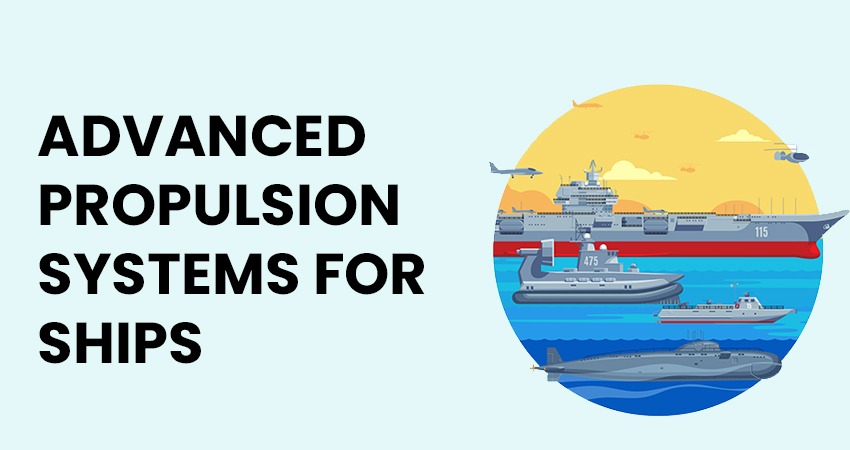
The marine industry has undergone the most dramatic revolutions. Ships
formerly powered by mere sails and even steam engines currently rely on really
advanced propulsion. These systems constitute the core or backbone of
efficiencies, sustainability, and performance. Within the modernized world,
constantly evolving demands continuously challenge marine engineers to innovate
solutions.
The operation of ships relies centrally on propulsion systems. These
are what define the speed, the consumption of fuel, and environmental impact.
Due to increased trade on a global level, it has been more crucial than ever to
enhance marine propulsion systems. Engineers have targeted systems that achieve
performance with sustainability.
Conventional
Propulsion Systems
Traditionally, ships used steam engines and diesel engines. These
systems were robust and reliable. However, they came with limitations. Steam
engines consumed large amounts of coal and water. Diesel engines improved
efficiency but contributed significantly to pollution.
Over time, the systems were improved. Contemporary diesel engines
consume lesser fuel and cause fewer emissions. However, there was still room
for improvement. The marine sector was crying for innovation. Society was in
need of cleaner and efficient technologies. These developments brought forward
the latest advanced propulsion systems.
Innovative
Propulsion Solutions
1. LNG-Fuelled Engines
LNG is a cleaner fuel compared to the traditional fuels. The carbon
dioxide and sulfur oxides emitted by LNG engines are less. They are gaining
popularity in the shipping industry. The ships that run on LNG are not only
environmentally friendly but also economical in the long term.
2. Hybrid Propulsion Systems
Hybrid propulsion uses a combination of diesel engines and electric
motors. The systems are less fuel-hungry and produce fewer emissions. Hybrid
ships can run on electric power when navigating sensitive areas, such as ports.
This limits air and noise pollution.
3. Fuel Cells
Fuel cells are another innovative technology. They use hydrogen to
produce electricity. The byproduct is only water. Fuel cells are quiet,
efficient, and environmentally friendly. Many companies are exploring their use
in ships.
4. Wind-Assisted Propulsion
Wind is back in vogue for modern shipping. Advanced sails and rotor
systems can harness wind energy to reduce the fuel consumption significantly.
Though they cannot replace the engine entirely, the savings of wind-assist
technologies are tremendous.
5. Nuclear Propulsion
Nuclear propulsion is not a new concept but is gaining renewed
attention. It is used in military vessels and icebreakers. Nuclear-powered
ships can run for years without refueling. However, challenges like safety and
high costs limit their use in commercial shipping.
Benefits of
Advanced Propulsion Systems
The shift to advanced propulsion systems offers many benefits. These
include:
●
Less Pollution: The new generation of systems has
been designed in accordance with stringent environmental regulations. They
reduce greenhouse gases and other harmful pollutants.
●
Economical Efficiency: Fuel-saving engines reduce
operational costs. In the long run, this saves money for ship operators.
●
Better Performance: Advanced systems provide
better speed and maneuverability. This increases the overall performance of
ships.
●
Sustainability: The marine industry contributes
to the global sustainability agenda by embracing clean technologies.
Development
Challenges
Despite the progress, challenges remain. Advanced propulsion systems
require significant investment. Not all shipping companies can afford these
technologies. Infrastructure, such as LNG fueling stations, is still limited in
many ports. Additionally, training crew members to operate new systems takes
time and resources.
Another challenge is the balance between innovation and safety. Ships
must comply with international safety standards. Engineers must ensure that
advanced systems are reliable and secure.
Roles for Marine
Engineers
At the spearheading end, one finds the role of a marine engineer, in
charge of advanced propulsion system designing, testing, and implementations.
His is molding the face of tomorrow for the maritime industry.
A rewarding dynamic career field with ample use for creativity and
solution development. If any aspiring candidate feels an apt fit into such
roles, proper upkeep with trendy innovations should also follow.
If you are interested in Marine Engineering, then Engineers Heaven is
the place for you. Visit Engineer’s Heaven to explore resources, training
programs, and industry insights. Stay ahead in your career with the latest
updates and expert guidance.
(Disclaimer: This statistics could be different in different part of World and Different timeline. this statistics has been generated based on data available till 2025 or relavant time span.)
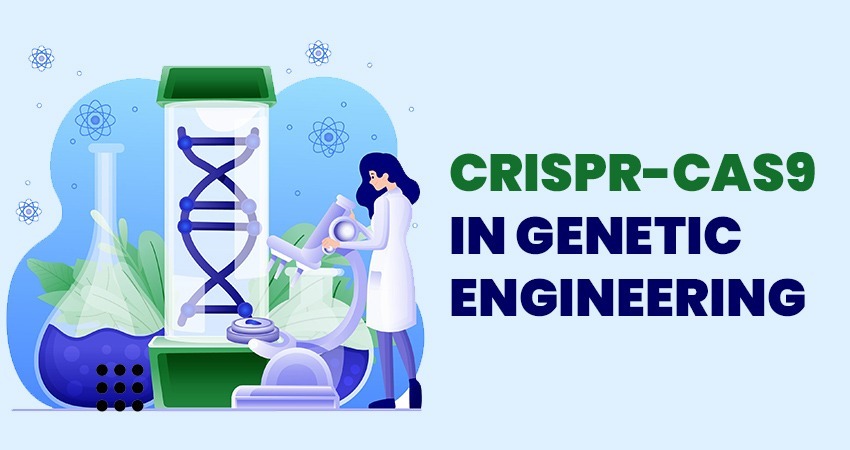
Genetic engineering has changed the
world of science. It has made impossible things possible. At the heart of all
these advancements is CRISPR-Cas9. This tool has revolutionized the way genes
are edited. It is fast, precise, and cost-effective. But how exactly does it
work, and why is it so revolutionary? Let's explore.
What is CRISPR-Cas9?
CRISPR stands for "Clustered
Regularly Interspaced Short Palindromic Repeats." It's a naturally
occurring system in bacteria. These little guys use this mechanism to resist
viruses. In other words, it is this Cas9, which is like the molecular scissors:
the DNA would get cut off at that spot.
Scientists discovered that this system
could be applied in genetic engineering. They guide Cas9 to a specific gene and
cut or modify DNA by doing so. This has now opened doors to endless
possibilities.
How Does CRISPR-Cas9 Work?
The process is simple. First, scientists
design a guide RNA (gRNA). This RNA is complementary to the DNA sequence they
wish to target. The guide RNA guides Cas9 to the targeted site in the genome.
Once at the site, Cas9 cuts the DNA.
After the cut, the cell repairs the DNA.
Scientists can manipulate this repair. They can delete, modify, or insert
genes. This makes CRISPR-Cas9 so powerful.
Applications of CRISPR-Cas9
CRISPR-Cas9 is not only a scientific
tool. It is the solution to many real-world problems. Its applications are
vast, from healthcare to agriculture and even environmental science.
1. Medicine
CRISPR is a game-changer in medicine.
Scientists use it to treat genetic diseases such as sickle cell anemia and
cystic fibrosis. These diseases result from faulty genes. CRISPR can correct
these errors at the DNA level.
CRISPR also holds promise in cancer
research. By editing immune cells, scientists can enhance their ability to
fight tumors. This is already being tested in clinical trials.
2. Agriculture
The agricultural industry has greatly
benefited from CRISPR. Crops can now be engineered to resist pests and
diseases. They can also be made more nutritious and better suited to changing
climates.
For instance, CRISPR has been used to
develop fungal-resistant wheat. It has also enhanced the yield and quality of
rice.
3. Environmental Science
CRISPR is also helping solve
environmental problems. Scientists are researching its application in
eradicating invasive species. Others are using it to minimize the carbon
footprint of industries.
For example, scientists are engineering
algae strains that absorb more carbon dioxide. This can significantly reduce
greenhouse gases.
The Advantages of CRISPR-Cas9
Why has CRISPR-Cas9 been in the
spotlight? For good reason:
● Accuracy: CRISPR locates and identifies
specific genes with high precision.
● Speed: The process is quicker than the traditional genetic engineering methods.
● Cost-Effectiveness: It is less expensive,
thereby increasing its reach among researchers.
It can be used in almost all fields of
science.
Ethical Issues
Despite the benefits, CRISPR-Cas9 raises
ethical concerns. The use of human embryos for editing is a controversial
issue. Many are concerned about its misuse, such as creating "designer
babies."
There are also concerns about unintended
edits. CRISPR is precise, but off-target effects can occur. Scientists are
working hard to minimize these risks.
Governments and regulatory bodies play a
crucial role here. Clear guidelines are essential to ensure ethical use.
The Future of CRISPR-Cas9
The potential of CRISPR-Cas9 is endless.
Researchers are trying to make it even more accurate. They are also studying
its application in space. Imagine editing genes to grow crops on Mars!
In the next years, CRISPR may end genetic
diseases. It can produce crops that feed the world. It can even reverse
environmental damage.
A Resource for Aspiring Engineers
If you are interested in such
revolutionary technologies, the good news is there for you. Engineer's Heaven is
a great place where your inquisitiveness would be fueled.
Go to Engineer’s Heaven for such great
articles and resources. It is a hub for education and innovation. Whether you
are a student or a professional, the platform provides something for everyone.
You will get updates on emerging
technologies such as CRISPR. You will learn more tools to improve your skills
also.
(Disclaimer: This statistics could be different in different part of World and Different timeline. this statistics has been generated based on data available till 2025 or relavant time span.)

The advent of 5G networks is changing industries around the globe. The pace at which this revolution is happening doesn't spare electrical engineering. With quicker speed, lower latency, and greater connectivity, 5G will transform how electrical systems are designed, developed, and managed. It affects industries and individuals alike. Here, engineers are at the center of this revolution, solving new challenges and seizing unprecedented opportunities.
What Makes 5G Different?
5G is a fifth generation network. This is
significantly far superior than any predecessor. It operates nearly 100 times
faster than 4G. Latency or delay has come down to the order of just
milliseconds. Communication in real-time is what comes from it. More devices
connect simultaneously without a sense of congestion.
These features make 5G a network that
transcends the wireless mobile network. It is the base for smart cities,
autonomous cars, and the Internet of Things. Electrical Engineering, therefore,
contribute significantly to this innovation.
5G and Circuit Design
The high frequency of 5G signals requires
advanced circuit designs. Traditional circuits are not sufficient for these
frequencies. Electrical engineers must design high-speed circuits. They must
also ensure energy efficiency. These designs require precision and expertise.
Heat dissipation and electromagnetic
interference are challenges in 5G. Advanced materials, such as GaN, are used in
circuits to improve performance and durability. They are continuing to break
the records of electrical engineering.
Infrastructure
5G has the potential to form a very dense
network. It demands a lot of infrastructure. This is not feasible with
traditional cell towers. Small cells are necessary to address the gaps in the
network. Small cells include compact antennas installed on buildings, poles,
and even streetlights.
Electrical engineers design and deploy
these systems. They ensure smooth integration with existing infrastructure.
Power management is critical for these systems. Engineers develop innovative
power solutions for uninterrupted connectivity.
The Emergence of Smart Grids
5G networks enable smart grids. These are
advanced electrical grids with real-time data communication. Smart grids
monitor energy flow and optimize consumption. They can even predict outages and
respond instantly.
The grids will be designed by electrical
engineers. They design sensors and control systems. They also make it reliable
and scalable. With 5G, smart grids are more efficient and sustainable.
Impact on IoT Devices
5G accelerates the growth of IoT. IoT
devices, like smart thermostats and sensors, rely on constant communication. 5G
makes this possible with low latency and high bandwidth.
These devices' hardware gets designed by
electrical engineers. They have major concerns with miniaturization, energy
efficiency, and connectivity. Exponential in numbers will be the number of
devices as 5G unfolds. Solutions for engineers are to innovate in the future.
Automation and Robotics
5G networks support automation and
robotics. The connected robots can now be used in factories for the performance
of tasks in real-time. Autonomous vehicles use 5G for navigation and for
safety.
Control systems for such applications are
designed by electrical engineers. The systems have to be efficient and
accurate. It means that with 5G engineers can take automation to the next
level.
Challenges for Engineers
This is the case because the 5G
revolution is not without its fair share of challenges. Security threats are
something that has to be dealt with by engineers. While the networks expand, so
does the risk. Security engineers are required to design systems that will
safeguard data and devices.
Another is sustainability of the 5G
infrastructure: the latter requires energy. Designers have to develop work that
is energy efficient. The integration of renewable energy is the answer.
Last but not the least, there is a demand
for engineers with the skills. It is very important for engineers to remain
informed on the latest technologies and advances.
Chances in Electrical Engineering
The effect of 5G is bringing great
opportunities. Electrical engineers are much sought after in the industry.
Telecommunication, health care and manufacturing sectors have recruited
engineers for the 5G technology development Engineers also have the chance to
work in research and development section. They are coming up with future
technologies such as 6G and even beyond. In the case of young engineers, it is
an exciting period. Electrical engineering is dynamic in nature. Somebody has
to gain new knowledge and skills.
Remember, Engineer’s Heaven is the online community for passionate engineers which is undoubtedly one stop destination for all your queries. Here you will find all the resources you need to help you on your engineering endeavor. Featuring blogs, vidoes, questionnaires and tutorials to a forum and more, Engineer’s Heaven provides you with the information and resources you need to succeed in your chosen profession.
(Disclaimer: This statistics could be different in different part of World and Different timeline. this statistics has been generated based on data available till 2025 or relavant time span.)
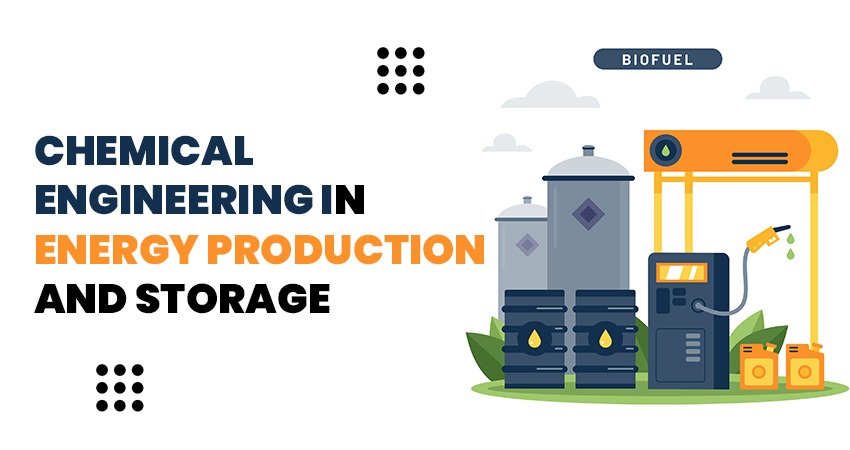
Energy is the backbone of modern society. Every sector, from transportation to technology, relies on it. Yet, producing and storing energy efficiently is a constant challenge. This is where chemical engineering steps in. It bridges science and technology to create solutions for energy production and storage.
Energy production is complex. It entails converting raw
materials such as coal, natural gas, or biomass into usable energy. Chemical Engineers make sure this process is efficient and sustainable.
One major contribution lies in the development of cleaner
fuels. Traditional fuels such as coal emit harmful emissions. Chemical
engineers are working to reduce these emissions through innovative techniques.
They design systems that capture carbon dioxide before it enters the
atmosphere.
Chemical engineers are excellent in another area:
renewable energy. To enhance efficiency, wind and solar energy rely on advanced
materials, and chemical engineers develop these. For instance, they create a
better coating for the solar panels so that more sunlight is captured.
Hydrogen energy is also getting attention. Hydrogen is a
clean energy source, but its production can be difficult. Chemical engineers
develop processes to make hydrogen production more efficient. That includes
innovations in electrolysis and fuel cells.
The
Role in Energy Storage
Energy production is just one side of the coin. The other
side is storage. Renewable energy systems cannot work without proper storage.
Flow Batteries: Flow batteries are large-scale batteries,
primarily ideal for storing renewable energy. Chemical engineers design fluids
that store energy in these systems.
Another focus is thermal energy storage. It involves
storing heat from the sun or industrial processes. Chemical engineers develop
materials that retain this heat for long periods. These systems are very
important in balancing energy supply and demand.
Sustainability
and Environmental Impact
Chemical engineers are at the forefront of sustainable
energy solutions. They focus on reducing waste and minimizing environmental
impact.
Recycling is another input of chemical engineering.
Valuable materials in these batteries and panels are being reclaimed by
chemical engineers. Sustainability for energy systems follows this recycling
strategy.
Future
Prospects in Energy Engineering
Chemical engineering holds the key to the future of
energy. Each day sees a new emergence of technology. These technologies, made
practical, have been driven into reality by chemical engineers.
AI is the recent addition in the energy systems. The
chemical engineers optimize the process through AI. The efficiencies are
enhanced with reduced cost.
Another breakthrough is nanotechnology. This is working at
the atomic level with materials. Chemical engineers utilize nanotechnology in
developing improved catalysts. The catalysts speed up chemical reactions in the
generation of energy.
Fusion energy is on the horizon, too. It imitates the
generation of energy by the sun. Chemical engineers are striving to make this
energy a reality. It can generate unlimited clean energy in the future.
Why
Engineers Heaven is Your Best Resource
If you’re passionate about chemical engineering, visit the og. This website is a hub for engineers and aspiring professionals. It offers valuable resources for understanding energy systems and beyond.
Engineer’s Heavenprovides easy-to-read articles on cutting-edge technologies. It also offers practical tools for students and professionals. Whether you’re researching fuel cells or battery storage, this site has you covered. It also links you to the world community of engineers. Share your ideas with other engineers, learn from the best minds, and enjoy your life on the go with Engineers Heaven as more than just a resource.
(Disclaimer: This statistics could be different in
different part of World and Different timeline. this statistics has been
generated based on data available till 2025 or relavant time span.)
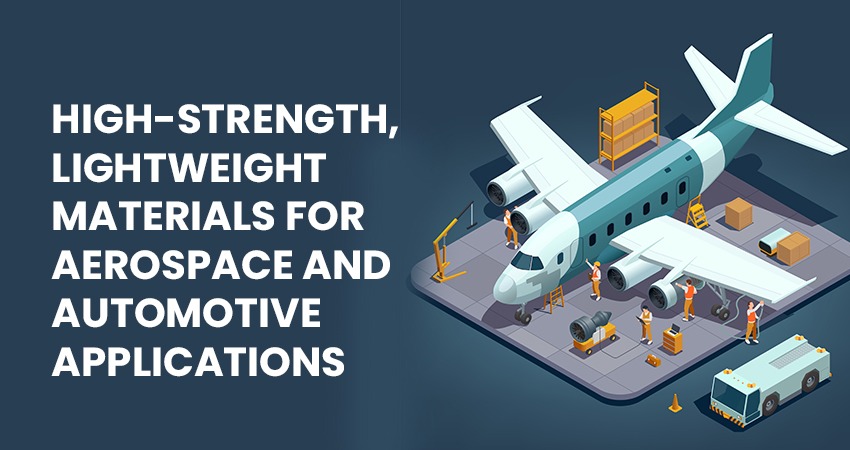
There has never been such a high demand
for efficient, durable, andlightweight materials in aerospace and automotive
industries. Industries are pushing the boundaries of materials engineering to
meet performance, safety, and environmental standards. The result? Advanced
materials that are stronger, lighter, and more versatile than ever before. For
more details about advanced engineering, visit Engineers Heaven.
Why Do
Lightweight Materials Matter?
Weight saving is important for both
aerospace and automotive industries. Vehicles that are lighter in weight
require less fuel, which saves them from increased emission. An aircraft with
components lighter in weight would have a larger payload and greater distances
to be traveled.
However, safety necessitates that these
materials be sufficiently strong. This balance between strength and weight is
the high pressure driving innovation in materials engineering.
New Lightweight
Materials
●
Carbon Fiber
Composites
Carbon fiber composites are changing both
markets. They are extremely strong and lightweight. Five times stronger than
steel, they weigh much less.
Carbon fiber is used widely in aerospace
applications, such as wings, fuselage, and interiors. In automotive
applications, it is suitable for sports cars and electric vehicles. Its cost is
too high, but its benefits are worth the cost.
●
Aluminum Alloys
Aluminum alloys are famous for their
strength-to-weight ratio. Aluminum alloys are widely used in the frames of
automobiles and aircraft structures.
It is also corrosion-resistant and
recyclable material, hence, sustainable. Recent advancements have further
improved its tensile strength to make it more appropriate for high-performance
applications.
●
Titanium Alloys
Titanium alloys are lighter than steel
and equally strong. Offering exceptional resistance to heat and corrosion, this
makes them perfect for aerospace components like jet engines and landing gear.
While costly, scientists are trying to
reduce the cost of production. This will increase its application in automotive
manufacturing in the near future.
●
High-Performance
Plastics
High-performance plastics, including PEEK
and PPS, are becoming increasingly popular. These materials are lightweight,
strong, and resistant to extreme temperatures.
They are used in everything from fuel
systems to electrical components. In aerospace, they reduce weight without
compromising safety.
●
Metal Matrix
Composites (MMCs)
Metal matrix composites are a combination
of metals with ceramic or other reinforcements. These materials provide better
strength and thermal properties.
MMCs are highly useful in engines and
braking systems. They have high stress and temperature resistance, making them
reliable.
Manufacturing
Techniques Driving Innovation
Advanced materials development is not
just about the materials themselves. Manufacturing techniques play a
significant role.
Additive
Manufacturing (3D Printing)
Additive manufacturing is useful for
precise designs and less material waste. It is suitable for the production of
complex components made from lightweight materials.
Aerospace companies use 3D printing for
engine parts and structural components. Automakers are using it for custom and
low-volume production.
Advanced Forging
and Casting
New forging and casting techniques
enhance material properties. The methods increase strength, reduce defects, and
increase efficiency.
Titanium and aluminum components are
usually produced with these advanced methods.
Nanotechnology
Nanotechnology: Transforming Materials on
the Molecular Scale
Materials are improved in terms of
strength, weight, and durability.
Carbon nanotubes and graphene are only
two amongst this technology that is often used in composites for applications
in aeronautics and automotive areas.
Challenges and
Future Directions
Achievements notwithstanding, there
remain plenty of challenges. One of the main challenges is the cost,
particularly with a material like carbon fiber and titanium. Innovation is
necessary to reduce the cost of producing these materials.
Sustainability is the other area.
Recycling lightweight material is challenging, but it needs to be done because
waste should be minimized. Work is being done on making them greener.
Future developments would likely be in
hybrid materials. They take the best from two different materials. Hybrid
composites could thus be a merger of carbon fiber's strength with metals'
flexibility.
Materials engineering is an
ever-evolving field. Staying updated with the latest advancements is crucial
for engineers, researchers, and enthusiasts.
For more resources, articles, and expert
insights, visit Engineer’s Heaven It is your one-stop platform for everything
engineering. Whether you are a student, professional, or innovator, Engineers
Heaven has something for you. Join a community that values progress,
innovation, and learning.
(Disclaimer: This statistics could be different in different part of World and Different timeline. this statistics has been generated based on data available till 2025 or relavant time span.)
